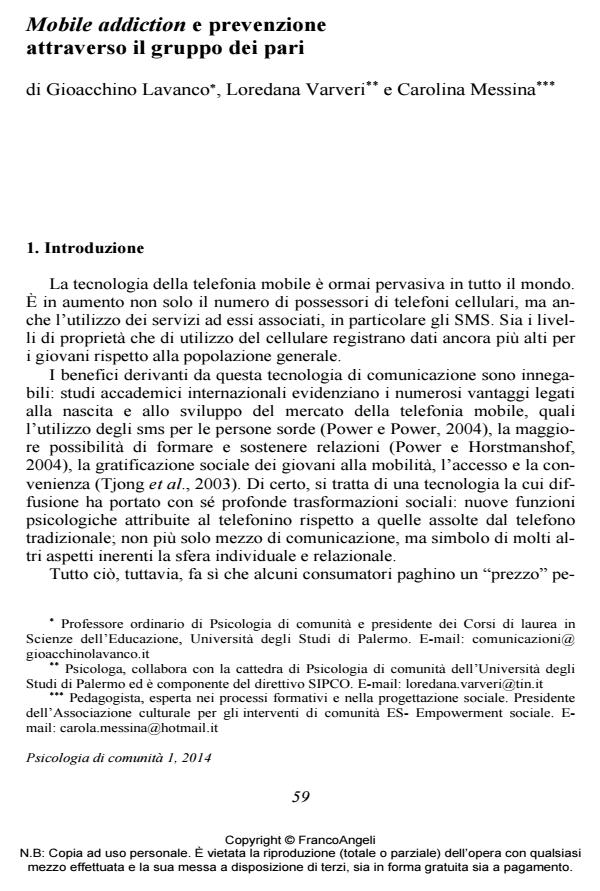Mobile addiction e prevenzione attraverso il gruppo dei pari
Titolo Rivista PSICOLOGIA DI COMUNITA’
Autori/Curatori Gioacchino Lavanco, Loredana Varveri, Carolina Messina
Anno di pubblicazione 2014 Fascicolo 2014/1
Lingua Italiano Numero pagine 12 P. 59-70 Dimensione file 69 KB
DOI 10.3280/PSC2014-001005
Il DOI è il codice a barre della proprietà intellettuale: per saperne di più
clicca qui
Qui sotto puoi vedere in anteprima la prima pagina di questo articolo.
Se questo articolo ti interessa, lo puoi acquistare (e scaricare in formato pdf) seguendo le facili indicazioni per acquistare il download credit. Acquista Download Credits per scaricare questo Articolo in formato PDF

FrancoAngeli è membro della Publishers International Linking Association, Inc (PILA)associazione indipendente e non profit per facilitare (attraverso i servizi tecnologici implementati da CrossRef.org) l’accesso degli studiosi ai contenuti digitali nelle pubblicazioni professionali e scientifiche
La dipendenza da cellulare, espressione dei profondi cambiamenti economici, sociali e culturali degli ultimi decenni, sta diventando un problema sempre più diffuso, soprattutto fra gli adolescenti. L’articolo, nella prima parte si sofferma sull’analisi della letteratura relativa alla dipendenza tecnologica, in generale, e alla dipendenza da cellulare, nello specifico; nella seconda parte, presenta una ricerca-intervento che, da un lato, ha avuto l’obiettivo di esaminare la relazione tra fattori cognitivi (locus of control) e fattori emotivi (disregolazione emotiva) nei casi di abuso nell’utilizzo di telefoni cellulari; dall’altro, ha voluto avviare una riflessione circa l’influenza del gruppo sia nello stimolare il comportamento di abuso, sia nel trasformare il cellulare in strumento di coping rispetto al comportamento regolativo.
Parole chiave:Dipendenza da cellulare, adolescenza, ricerca-intervento, locus of control, disregolazione emotiva, gruppo dei pari.
- L'uso di Internet e il benessere psicosociale in adolescenza: uno studio correlazionale Daniela Caso, in PSICOLOGIA DELLA SALUTE 2/2015 pp.141
DOI: 10.3280/PDS2015-002008
Gioacchino Lavanco, Loredana Varveri, Carolina Messina, Mobile addiction e prevenzione attraverso il gruppo dei pari in "PSICOLOGIA DI COMUNITA’" 1/2014, pp 59-70, DOI: 10.3280/PSC2014-001005